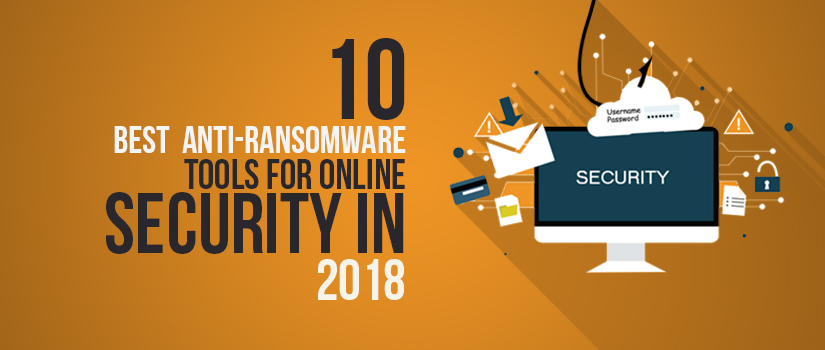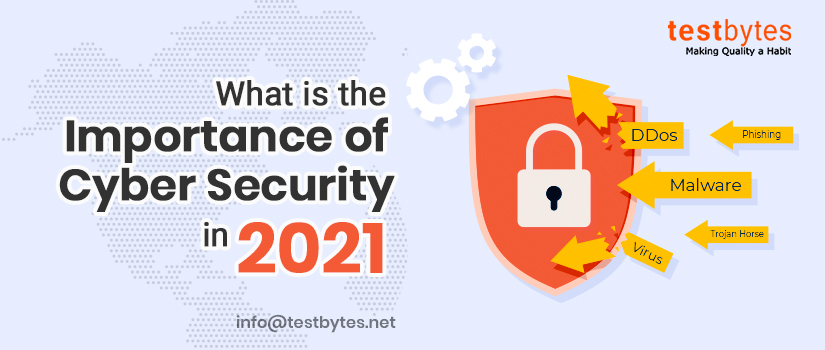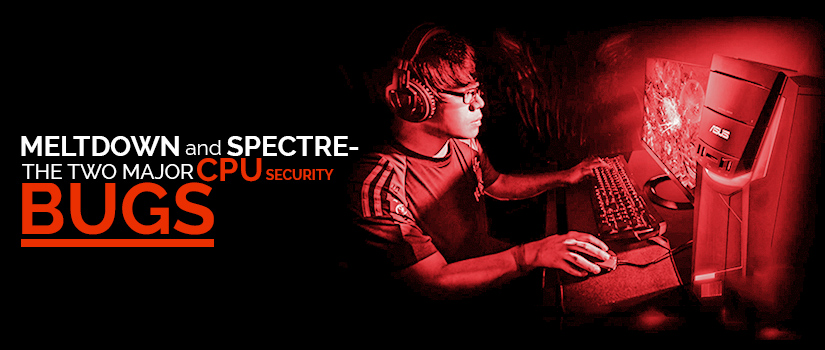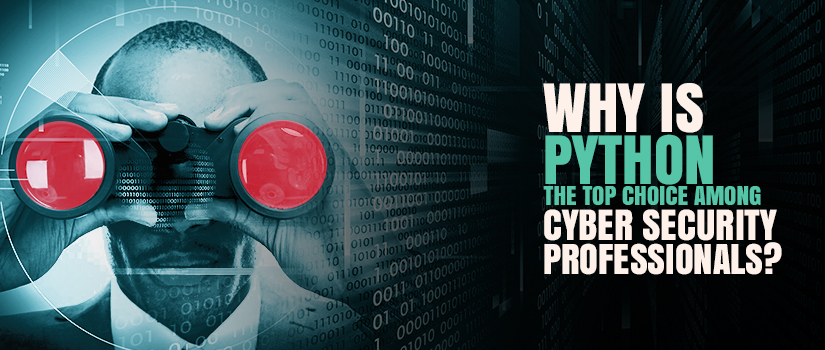Ransomware has emerged as one of the fastest growing threats in terms of privacy and security of the computer systems.
8 billion was lost last year owing to Ransomware attacks. It is expected that if ransomware attacks a company, an average of $133,000 will be lost in correcting everything. So what’s the possible escape from this situation? Only one answer! Anti-ransomware tools. To an extent, they can block ransomware attacks and save your company from a huge loss.
But there are a plethora of Anti Ransomware tools out there in the market. To avoid confusion we have made a list of leading 15 Anti-Ransomware tools for you to choose from
1. Trend Micro Lock Screen Ransomware Tool

This tool has specifically been designed to help a person get rid of lock screen ransomware, a type of malware that blocks the user’s access to the PC and forces him/her to pay a certain amount in order to get back their data.
The tool works effectively in two situations – firstly, when the PC’s normal mode is blocked but the safe mode is still accessible and secondly when the lock screen ransomware blocks both the normal and safe mode.
In the first situation, the users boot the PC into the same model to avoid the malware and install the software using a keyboard sequence.
A new screen, then, appears asking the user to scan, clean the system and finally reboot the same.
In the second situation, it is possible to load the removal tool onto a USB drive using a mal-free system and executing from there during a boot.
2. Avast Anti-Ransomware Tools

Avast offers 16 different types of ransomware tools. However, not all the decryptors work on all types of ransomware, the available ransomware tools by Avast are free as well as can check for all sort of viruses at the same time.
3. BitDefender Anti-Ransomware

BitDefender’s tool is planned to act as insurance against being tainted by CTB-Locker, Locky, Petya, and TeslaCrypt ransomware.
Although it is not very clear how the program functions, but once it is loaded, it ought to identify a disease as it initiates, halting it before any documents are scrambled.
The splash screen is perfect and fundamental in feel, highlighting a section that prevents executables from running in specific areas and a choice to divert on insurance from the boot.
The organization accentuates that the program isn’t expected as a substitution for antivirus, however, ought to be utilized as a part of conjunction with it.

Zemana antimalware is a lightweight security arrangement that brings incredible insurance against ransomware.
Considering the expansion in ransomware assaults, Zemana has invested a lot of time to offer the best solution to offer ransomware protection.
Along with this, this tool also distinguishes and erases spyware, adware and other diverse no-nonsense malware.
The product brings ongoing assurance and add-on features like program cleanup.

Designed specifically for malware-infected PCs, this is one of the finest examples of products that offer specific ransomware security.
Malwarebytes aims to make use of cutting-edge technology to shield your documents from ransomware.
Because of its hostility towards malware, spyware, and rootkit technology, this tool is capable enough to identify malware as well as evacuating them.
Along with this, the tool also shields the browser and other programs that associate with the web.

Although not different, this tool is known as one of the most effective tools that work effectively against malware programming.
Capable of recognizing any conduct of ransomware in your framework, the tool either expels or reverses its effects.
The tool is packed in a CryptoGuard innovation that helps in easily eradicating any growing ransomware in the framework and reestablishing the files before their encryption.
7. Kaspersky Anti-ransomware Tool

Kaspersky Anti-ransomware tool is another extremely well known tool out there for its anti-ransomware properties.
The product offers security against various web dangers including ransomware, while likewise ensuring your protection and individual data, if there should be an occurrence of an assault.
Along with this, the product also advises the user about any inconsistent websites so that its ransomware does not spread to their framework.
8. Webroot SecureAnywhere Antivirus

Webroot Secure Anywhere Anti-virus utilizes conduct based tracking to identify any suspicious activities and decrypted infected documents in case you compromise amid a ransomware assault.
While this tool is an anti-virus first, ransomware security and inherent firewall are its additional features.
The tool works by keeping a substantial database of known dangers and inquiries when checking programs.
9. McAfee Ransomware Interceptor

McAfee is a trusted security brand that also gives assurance to offer protection against any sort of ransomware attack.
Light in weight, simple to utilize and available for free, this tool is incredible at blocking ransomware progressively and furthermore adjusting to new strains of ransomware.
It can raise a couple of false location, which is somewhat irritating, however nothing to stress over, truly.
Better for it to be over-careful than miss a dangerous risk.
10. CyberSight RansomStopper

Available for free, this tool can detect and block all the real-world ransomware samples as well as does not allow the encryption of files.
Know More: Top 52 Software Testing Tools 2019
However, the tool is definitely vulnerable to get affected by ransomware as it allows file encryption only at the boot time.
The product is also similar to some other freely-available ransomware tools like Cybereason RansomFree, Trend Micro RansomBuster, and Malwarebytes Anti-Ransomware.
11. Check Point Zone Alarm Anti Ransomware

Check Point ZoneAlarm Anti Ransomware has the ability to analyse suspicious activities in your PC. It can easily detect ransomware attack and restores any encrypted files. Features of Check Point ZoneAlarm Anti Ransomware include,
- Can restore any encrypted file
- Even though it’s a stand-alone software it can work well with any antivirus package
- Provides the highest level protected by constantly monitoring the OS
12. Acronis Ransomware Protection

Acronis Ransomware Protection is an advanced ransomware protection suit that can protect all of the data in a system such as documents, programs, media files, etc. The software has the ability to observe patterns in which files are changed in a system. The suspicious pattern will be traced out so that attacks can detect effectively.
Acronis Ransomware Protection makes use of this pattern to learn about attacks and irregularity and will not let this happen again. Another important feature is the defense systems of the software it will not let any action interrupt while file backup. The system also monitors mater boot record of Windows-based system.
13. WinPatrol War

WinPatrol War is a next-gen anti-ransomware tool that uses AI to defend ransomware attacks. The first line of defense of WinPatrol War includes blocking threats before they can do any damage to your computer system.
WinPatrol War also offers network protection if a bad program is trying to breach your network system.
The tool basically creates a safe zone in your system and when an unknown/bad program tries to breach your system, WinPatrol War will block it.
14. Neushield

Neushield uses mirror shielding technology (Neushield adds a barrier to all the files in a computer system. So when a program is trying to alter files, it affects the overlay rather than the original file)to block ransomware attacks. What makes Neushield stand apart from other tools is that it can recover the files no matter how badly it’s corrupted.
Some ransomware attacks boot files of the computer. Neushield has the provision to stop that too. Neushield also has the ability to block write access to files that are being altered.
15. The Kure

Your computer has a lot of wanted and unwanted files. The Kure has the ability to recognize the nature of the files and delete the unwanted files.
Kure also has the ability to wash out unwanted changes in the re-boot itself. In short, simple reboot itself is enough to erase unwanted files from your system if The Kure is installed.
Give These a Try:
The above-mentioned tools are really effective in protecting the computer systems from all sorts of ransomware attacks.
And, the best aspect of these anti-ransomware tools is that these anti-ransomware tools ensure maximum protection without leading to any sort of data loss.
Therefore, it is best to stay safe by giving some of these anti-ransomware tools a try and strengthening your online security.
Know More: Top 12 Penetration Testing Tools 2019











